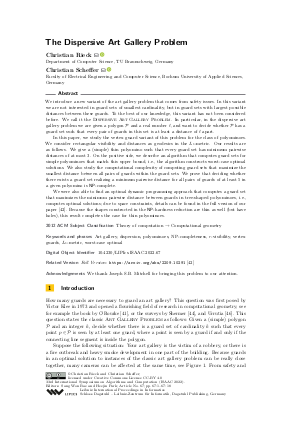LIPIcs.ISAAC.2022.67.pdf
- Filesize: 1.15 MB
- 18 pages

 Creative Commons Attribution 4.0 International license
Creative Commons Attribution 4.0 International license






Feedback for Dagstuhl Publishing